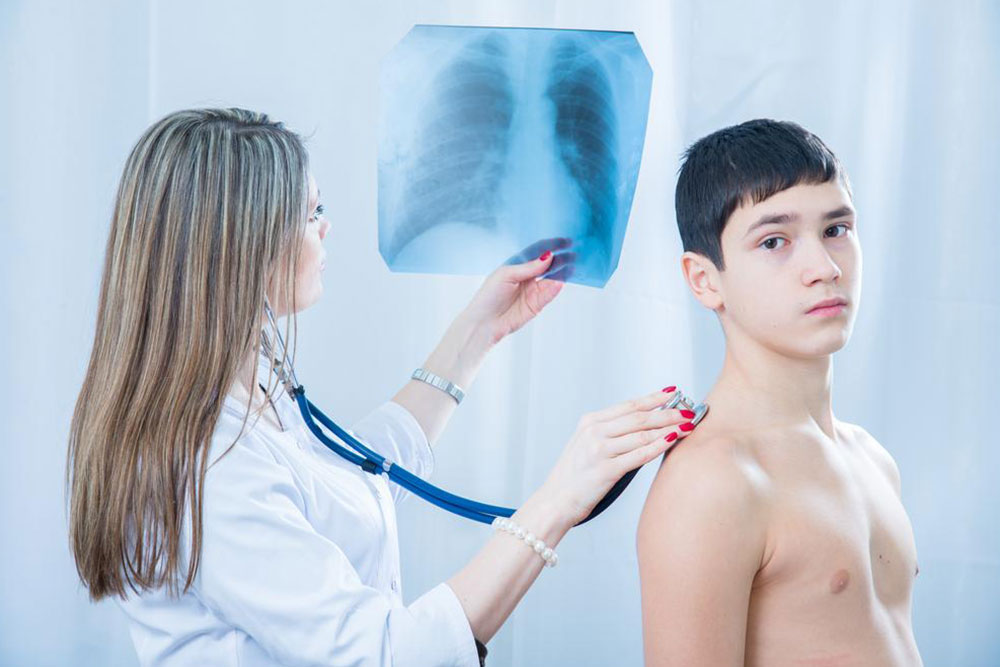Comprehensive Guide to Preventing and Managing Pneumonia for Better Respiratory Health
This comprehensive guide explores effective strategies to prevent and treat pneumonia. It highlights key symptoms, types, causes, diagnosis methods, treatment options, and vaccination recommendations. The article emphasizes the importance of early detection, vaccination, and lifestyle measures in reducing pneumonia risks, especially for vulnerable populations. By understanding the disease better, individuals can adopt appropriate preventive practices and seek timely medical intervention, ultimately reducing complications and mortality rates associated with pneumonia worldwide.

Effective Strategies for Pneumonia Prevention and Treatment
Understanding Pneumonia: Prevention, Symptoms, and Treatment Options
Pneumonia is a serious respiratory infection that affects millions worldwide each year. It causes inflammation in the alveoli, which are the microscopic air sacs in the lungs responsible for oxygen absorption. When these alveoli become inflamed, they can fill with fluid or pus, making it difficult for the individual to breathe properly. This condition can be caused by various pathogens, including bacteria, viruses, and fungi. Bacterial pneumonia is the most common form, but viral and fungal types are also significant, especially in immunocompromised populations. Understanding how pneumonia develops and spreads is crucial in identifying effective prevention and management strategies.
The severity of pneumonia can range from mild discomfort to life-threatening conditions, especially in vulnerable groups. Infants, young children, elderly individuals over 65, and those with compromised immune systems are at higher risk of developing severe pneumonia. Additionally, people with underlying health issues such as diabetes, heart disease, or chronic respiratory conditions are more susceptible to complications. Lifestyle factors like smoking and exposure to environmental pollutants further elevate the risk, highlighting the importance of targeted preventive measures.
Pneumonia continues to be a leading cause of infectious disease-related deaths worldwide, especially among children under five. The Centers for Disease Control and Prevention (CDC) emphasizes the significance of vaccination, early diagnosis, and prompt treatment to reduce morbidity and mortality associated with pneumonia. Those who smoke or have existing health conditions such as diabetes, heart disease, or chronic obstructive pulmonary disease (COPD) are particularly vulnerable, making prevention strategies even more critical for these groups. Effective management practices can significantly improve patient outcomes and prevent severe complications.
Recognizing the symptoms of pneumonia early can make a substantial difference in treatment efficacy. While symptoms often resemble those of a cold or flu, they tend to be more persistent and severe. Common signs include:
Prolonged cough that doesn't respond to standard remedies
Production of mucus or phlegm which may be yellow or green
Chest pain or discomfort, often aggravated by coughing or deep breathing
Shortness of breath or difficulty breathing
Fatigue, weakness, and malaise
Fever accompanied by chills and sweating
Nausea, vomiting, and sometimes diarrhea in severe cases
Types of Pneumonia and Their Causes
Pneumonia manifests in different forms depending on the pathogen involved and the circumstances of acquisition. Viral pneumonia is often caused by influenza viruses, respiratory syncytial virus (RSV), or other common respiratory viruses. Bacterial pneumonia is primarily caused by Streptococcus pneumoniae, which remains the most prevalent bacterial agent, but other bacteria such as Haemophilus influenzae and Mycoplasma pneumoniae also contribute. Fungal pneumonia, although less common, may result from fungi like Histoplasma or Cryptococcus, especially in immunocompromised individuals or those exposed to soil fungi or bird droppings.
Hospital-acquired pneumonia (HAP) develops within healthcare environments, often involving resistant bacterial strains, making it more difficult to treat. Conversely, community-acquired pneumonia (CAP) is contracted outside medical facilities and remains a common concern worldwide. Both bacterial and viral pathogens can spread via airborne droplets, emphasizing the importance of respiratory hygiene and infection control practices.
Diagnosis involves a combination of physical examinations, chest X-rays, blood tests, sputum analyses, pulse oximetry, and sometimes advanced imaging like CT scans. In complex cases, procedures such as bronchoscopy or pleural fluid analysis may be necessary to pinpoint the exact cause and severity of infection. Accurate diagnosis is essential for effective treatment planning.
Treatment Options for Pneumonia
Treatment varies depending on the infection type—viral or bacterial—and the severity of symptoms. Bacterial pneumonia often responds well to antibiotics, which are tailored based on the bacteria involved. Broad-spectrum antibiotics may be used initially, then adjusted after lab results are available. Hospitalization is sometimes necessary, especially for severe cases, involving intravenous antibiotics, oxygen therapy, and respiratory support. Severe pneumonia may require ventilator assistance in intensive care units (ICU).
Viral pneumonia typically resolves within one to three weeks and may not require antibiotics. Antiviral medications such as oseltamivir (Tamiflu) can be effective if administered early in the course of illness. Supportive care, including rest, hydration, and fever management, plays a vital role in recovery. It is essential for patients to seek medical attention promptly upon suspected pneumonia symptoms to prevent complications.
Pneumococcal Vaccination: Prevention and Recommendations
Vaccination remains one of the most effective strategies for preventing pneumonia caused by bacteria and some viruses. The CDC recommends pneumococcal vaccines for adults over 65 and for individuals at increased risk due to health conditions. The pneumococcal conjugate vaccine (PCV13) is usually administered first, followed by the pneumococcal polysaccharide vaccine (PPSV23) after a year. For those already vaccinated with PPSV23, receiving PCV13 at least one year later is advised. These vaccines significantly reduce the incidence of pneumococcal disease and related pneumonia.
Common side effects of pneumococcal vaccines include mild soreness or redness at the injection site, low-grade fever, chills, nausea, and tenderness. Serious adverse reactions are rare but should be reported immediately to healthcare providers. Vaccination protocols may vary based on age, health status, and previous immunization history, making consultation with a healthcare professional essential.
Preventive Measures to Lower Pneumonia Risk
Prevention is paramount in controlling pneumonia incidence. Regular vaccination, practicing good hygiene, frequent handwashing, and disinfecting surfaces are vital in reducing the spread of infectious agents. Managing chronic illnesses effectively, quitting smoking, maintaining a healthy lifestyle, and avoiding exposure to respiratory irritants further diminish the risk. Additionally, staying informed about local outbreaks or epidemics allows for timely preventive actions, including vaccination updates. Implementing these measures collectively contributes to a significant decline in pneumonia-related health burdens.





